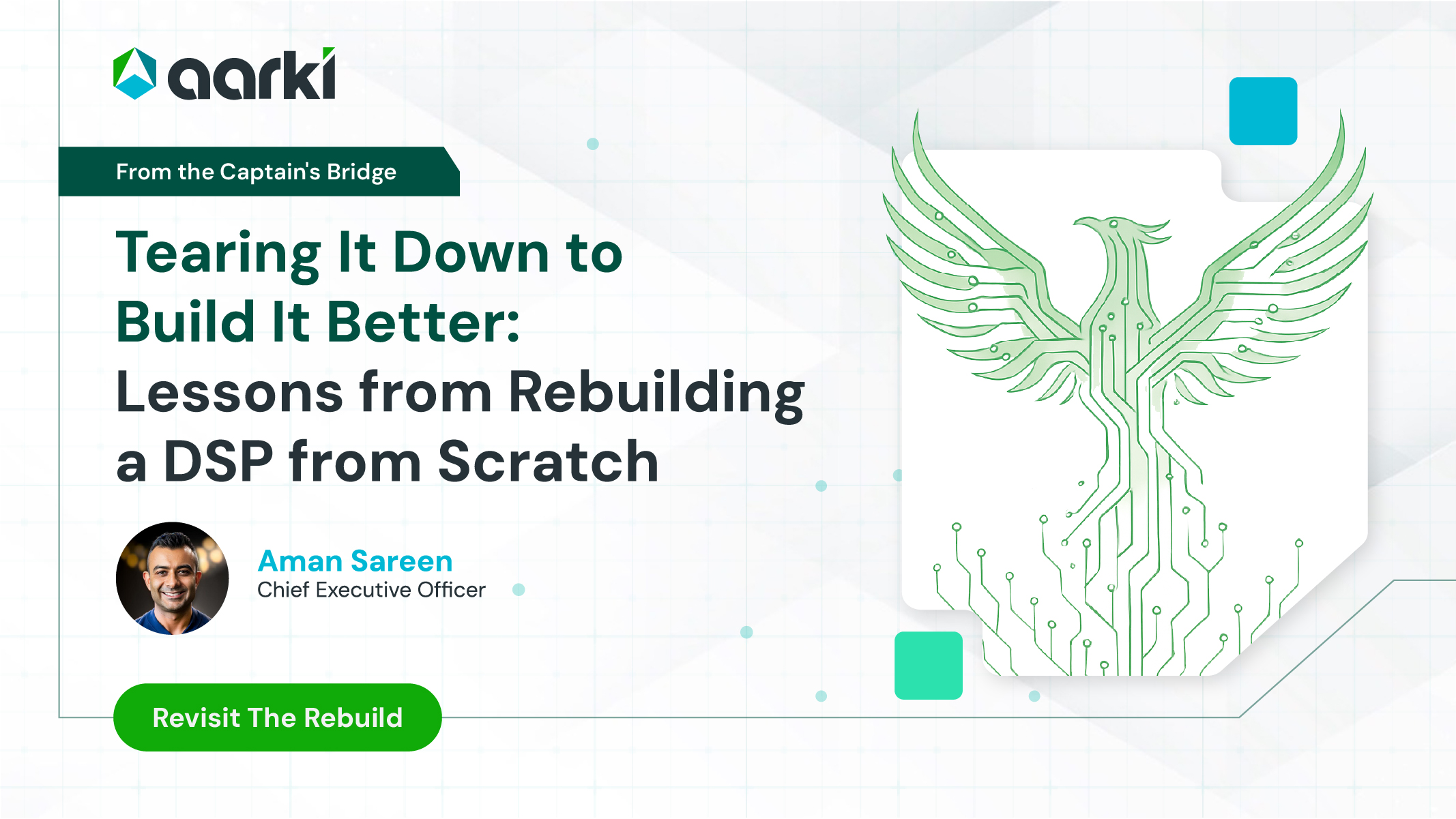
About The Author
Aman Sareen is CEO of Aarki, where he’s led a full-scale rebuild of the company’s DSP from the ground up—product, culture, and code included. He’s a second-time ad tech CEO (first DSP built in 2012, swore he’d never do it again… but the challenge of rebuilding was enticing). Aman’s obsessed with performance marketing that actually performs: privacy-safe, full-funnel, and built for ROAS, not vanity metrics. Based just outside San Francisco, he runs Aarki by day and a backyard full of chickens, bunnies, and two massive dogs by night. Eggs and ad tech wisdom are available upon request.
When I stepped into the CEO role at Aarki in January 2023, the company stood at a crossroads. The core product was aging, our culture was slow and layered, and sales processes were tangled and ineffective. This wasn’t a simple optimization job, it required a complete overhaul.
As a founder, I’d built a successful startup from the ground up before. But a turnaround is a different beast entirely. Unlike starting fresh, turning around an existing company means battling entrenched habits, legacy mindsets, and a culture resistant to change. The chance of failure? Very high. Success was far from guaranteed.
Here’s how we approached it, and what we learned:
1. Embrace Radical Honesty About What’s Broken
The first step wasn’t incremental improvements, it was a brutally honest assessment. We openly confronted what wasn’t working, from the technology stack to internal processes. This transparency was uncomfortable but essential. Instead of hiding behind layers and closed-door conversations that defined Aarki 1.0, we committed openly to confronting our reality head-on.
2. Start Over And Mean It
We didn’t merely tweak our product; we tore it down completely. We stopped selling, dismantled our outdated tech stack, and committed our entire organization to a full product rebuild. It was terrifying! Revenue paused, sales stopped, but it allowed total focus on crafting a product truly built for today’s market. This meant embedding privacy-first strategies deeply into the product rather than bolting them on afterward and re-centering on retention as a core growth driver, not an afterthought.
3. Transforming Culture is Harder Than Tech
More challenging than rebuilding technology was reshaping culture. Aarki 1.0 had too many layers, closed conversations, silos, and little accountability. Transparency was scarce. To address this, we made the difficult choice to rebuild the team itself. Nearly 80% of the original team left, and we replaced the entire sales organization.
We prioritized candidates who valued transparency, accountability, and ownership. We implemented clear KPIs, visible performance metrics, and strict accountability structures. JIRA and Confluence became foundational tools, not just for tech, but for an open, transparent organizational culture. Today’s Aarki thrives on open communication, rapid feedback loops, and candid accountability.
4. Recruiting Talent When You’re Struggling
Hiring during a turnaround isn’t easy. Who wants to join a company perceived as failing, especially when competing against bigger, better-funded competitors? Typically, only two kinds of candidates showed interest: those who deeply believed in the vision (often from my previous teams or network) or, frankly, our third and fourth choices. Building leadership required continuous up-leveling, working initially with whoever we could attract, then gradually bringing on stronger talent as our progress became clearer. This approach can seem heartless and even cruel, but limited resources and urgency demand pragmatism. Many times, I genuinely felt everything might collapse, but we never gave up, continually refining and strengthening our team.
5. Product Excellence Drives Everything Else
Our new DSP platform, Encore, was built from scratch, designed for full-funnel performance, deep neural networks, SKAN4 compliance, and retention-driven outcomes. We focused relentlessly on product excellence, believing deeply that the right product would speak louder than any sales pitch ever could. Early market validation reinforced that belief, but the risk of failure always felt just around the corner.
6. Profitability as a Discipline
We didn’t set out to merely “grow at all costs.” Instead, we treated profitability as a discipline and a validation metric. This approach required making painful choices, remaining disciplined with resources, and continually making tough trade-offs. While it was incredibly challenging, this rigorous discipline became the cornerstone of our turnaround strategy, quietly signaling to us internally that we were on the right track.
7. Lessons for Founders Navigating a Turnaround
If you’re facing your own turnaround, here’s the hardest truth: it’s not incremental. It requires bold, decisive action and accepting that you might fail spectacularly. But if you commit fully, transparently, and courageously, you have a chance to reshape not just your product, but your entire organizational DNA.
- Transparency: Radical openness, even when it hurts.
- Accountability: Embed clear metrics, outcomes, and visible expectations.
- Courage to Start Over: Tear down legacy structures fully to build something better.
- Culture Over Everything: Tech rebuilds are challenging; cultural rebuilds are exponentially harder and infinitely more important.
Rebuilding Aarki wasn’t certain or safe. It was harder than starting a new venture from scratch. But the turnaround taught us invaluable lessons about leadership, resilience, and relentless focus on product and culture. We tore it down to build it better, and emerged stronger for it.